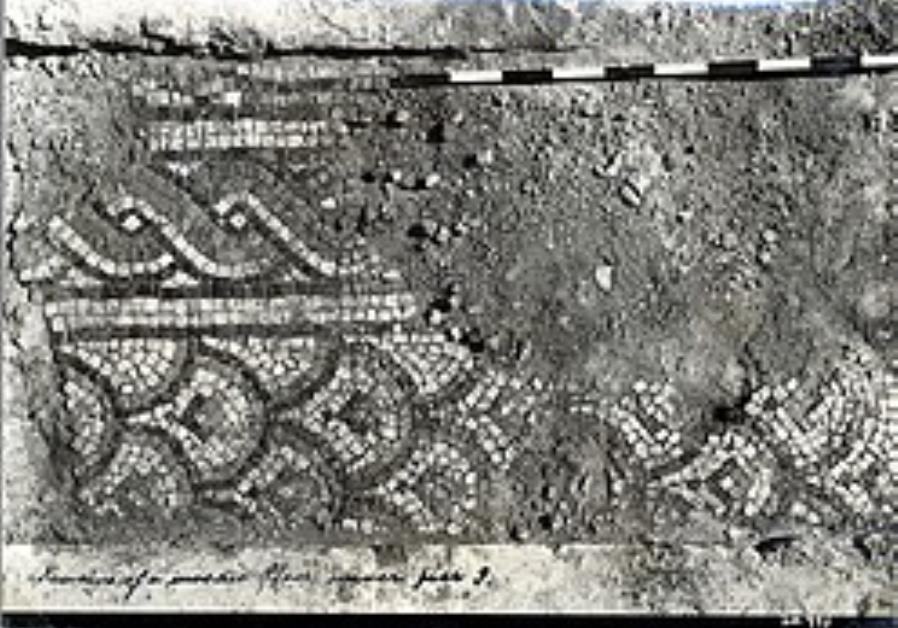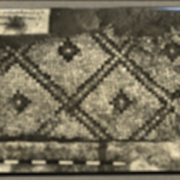Treasures in the British Mandate Archives
Happy International Archives Day!
Archaeologists spend a lot of time working with the fresh material coming out of excavations, but equally important is an archaeologist’s understanding of what came before. We must know about previous excavations, historical records, and the history of work at the site we are researching. Archives are a hugely important and often underutilized tool to help us do our job.
As we’ve said on numerous occasions, the Temple Mount Sifting Project is studying the first archaeological evidence from a large scale excavation of the Temple Mount.
This means that we have very little to work with. Not only is the material we are researching out of context because it was improperly excavated by bulldozer and without archaeological supervision, but we also have very little information from previous archaeological work on the Temple Mount. This means that every tiny scrap of information that we can gather is very precious to us.
In 2008, Zachi published published a paper in the annual New Studies on Jerusalem conference of Ingeborg Rennert Center for Jerusalem Studies in Bar-Ilan University about his research in the British Mandate Archives. He discovered a whole list of remnants and features on the Temple Mount that he was surprised had not been published. They help fill in the picture of the history of the Temple Mount and how it has been used over time.

Byzantine mosaic floor beneath the Aksa Mosque. (photo credit:Courtesy of Israel Antiquities Authority.)
One of the most important archives was a series of photographs in a file from the 1930s by R.W. Hamilton, the director of the British Mandate Antiquities Department. Due to severe earthquakes, major construction work was done in the Al-Aqsa mosque during the years 1938-1942. The work included excavations of pits under the mosque piers, and Hamilton published reports about the mosque, but ignored the substantial finds found under the earliest phase of the mosque. Among other things, Zachi discovered photographic evidence of a Byzantine mosaic floor under the Umayyad level of the Al-Aqsa Mosque, and a Second Temple period ritual bath (mikvah).
The Byzantine floor was huge news and was even written up in the Jerusalem Post asking the question “Was the Aksa Mosque built over the remains of a Byzantine church?” Most historic records from the Byzantine period, including letters by Christian pilgrims to Jerusalem, make no mention of a building on the Temple Mount. This discovery of the Byzantine floors, as well as the numerous Byzantine period artifacts discovered by the Sifting Project, are evidence of a public building: possibly a church. Dr. Barkay has said, “It is hard to establish with certainty that this was indeed the site of a church, but without a doubt it served as a public building and was likely either a church or a monastery…This changes the whole history of the Temple Mount during the Byzantine period as we knew it.”
This is a fantastic example of the types of knowledge we can gain from research in archives and a reason that we are happy to share our research with you on International Archives Day. There are truly amazing things to be discovered in the dusty records forgotten by time.
HERE is a link to the full Hebrew article on academia.edu. Below is the abstract in English.
ABSTRACT
In the last century several digs were conducted on Temple Mount as part of renovations and new constructions at the site. These digs encountered ancient remains, and in some cases were documented by inspectors or random visitors. Most of these documentations were never published, although new archaeological information was revealed. Information and photos of the digs and the finds was gathered from the archives of Antiquities Debarment of the British Mandate, the Israeli Antiquities Authority and from private visitor’s documentation.
Due to severe earthquakes major construction work was done in the Al-Aqsa mosque during the years 1938-1942. The work included excavations of pits under the mosque piers, which in some cases reached the depths of about 7m. Substantial information regarding finds revealed in these digs was documented by R.W. Hamilton, director of the British Mandate Antiquities Department. Hamilton even conducted a small scale excavation consisted of seven trenches in order to study the structural history of the mosque. He published his results regarding the mosque, but ignored the substantial finds found under the earliest phase of the mosque. Information regarding these finds can be retrieved from photographs in the Department’s archive.
Among the finds retrieved from these photographs there are: A Byzantine mosaic floor under the Umayyad level of the Al-Aqsa Mosque, A Second Temple period ritual bath (Miqveh) at the eastern most entrance to the present mosque, two large cisterns under the Double Passage, a rock-cut passage with a descending staircase under the Double Passage, a lintel with a (Hebrew\Aramic?) inscription at the entrance of the rock-cut passage, and various architectural remains seen in the depth of the pits excavated under the mosque piers.
Under the Israeli control upon the Temple Mount a few large scale digs took place which revealed substantial finds. Among them are: A pre-Herodian massive wall near the northeastern corner of the raised platform (1970), ancient floor levels under the dome of the chain (1975), small walls located at the edge of the banks of the fosse north-west to the raised platform (1979), a huge substructure that connects the double passage with the passage of the triple gate (1977-2001), An Early Islamic – Medieval vaulted structure north of the eastern most vault of the Solomon’s Stables (1999), remnants of an ancient wall near the north edge of the raised platform (2007), ancient fills (probably from the Second Temple period) north and east to the raised platform (2007), remnants of a wall located east of the raised platform and south of the eastern staircase (2007), a cluster of First Temple period finds near the south eastern corner of the raised platform (2007), fragments of Umayyad pavement east to the Al-Aqsa mosque (2007), and many finds found out of context and could help to better understand the history of the Temple Mount.












Leave a Reply
Want to join the discussion?Feel free to contribute!